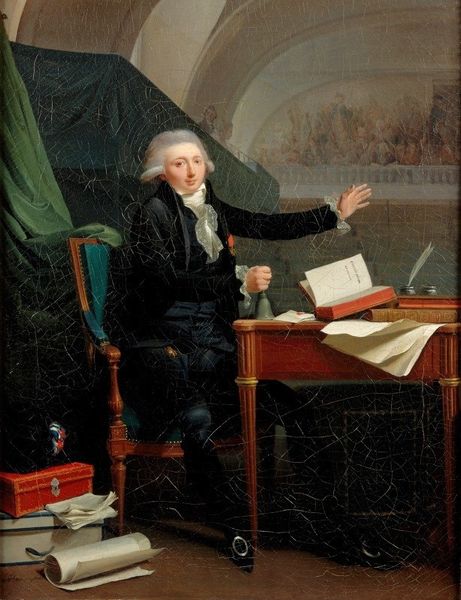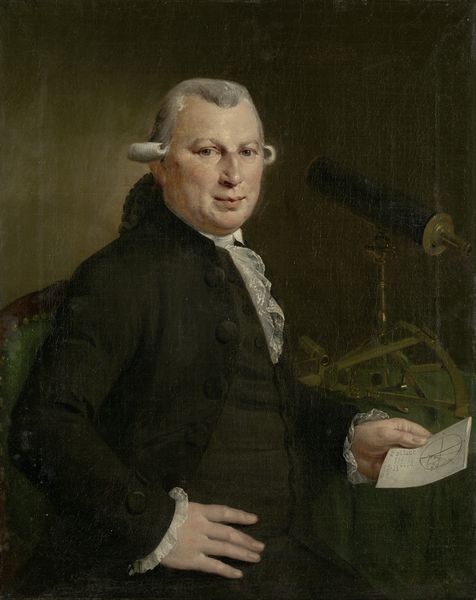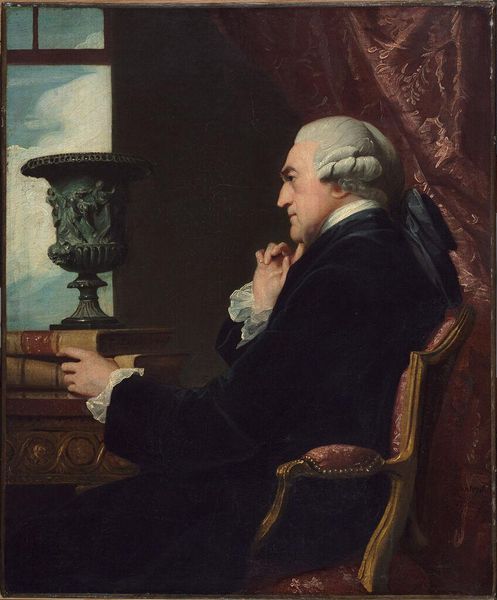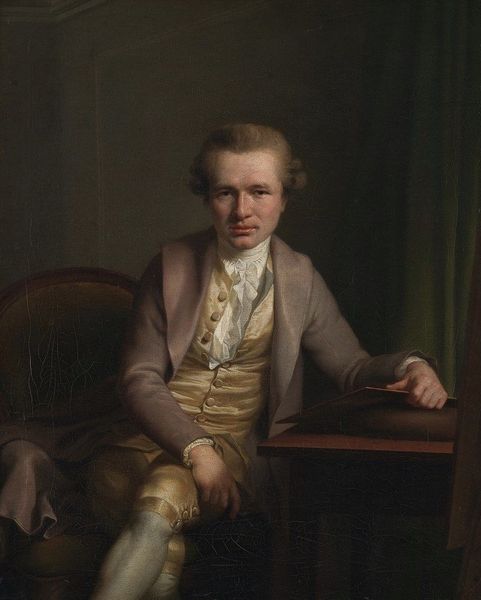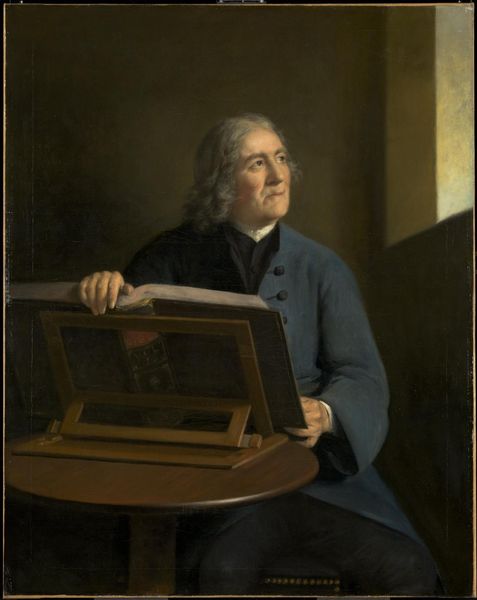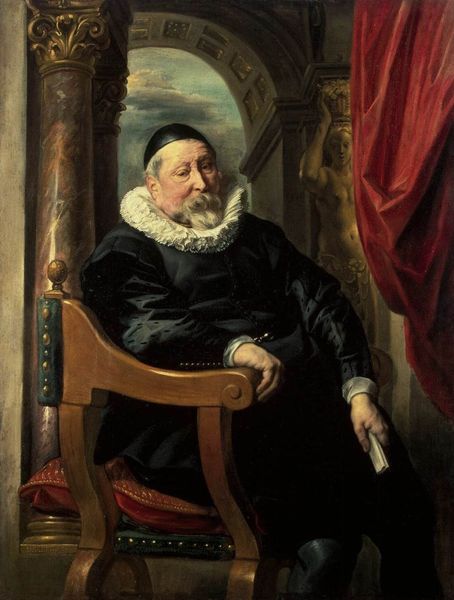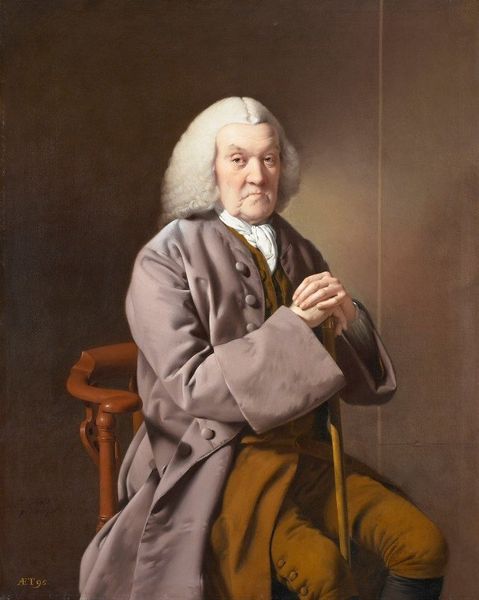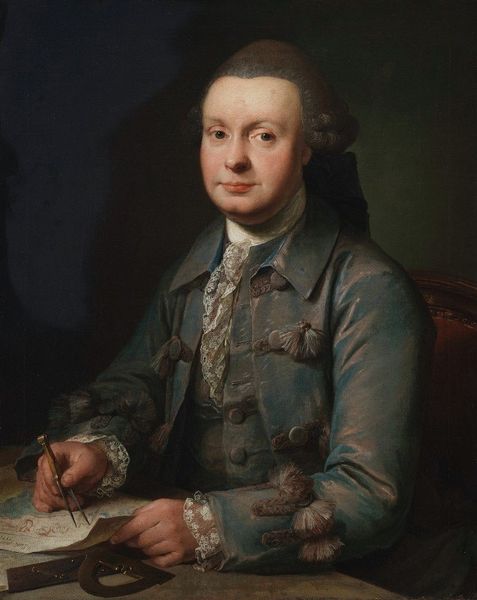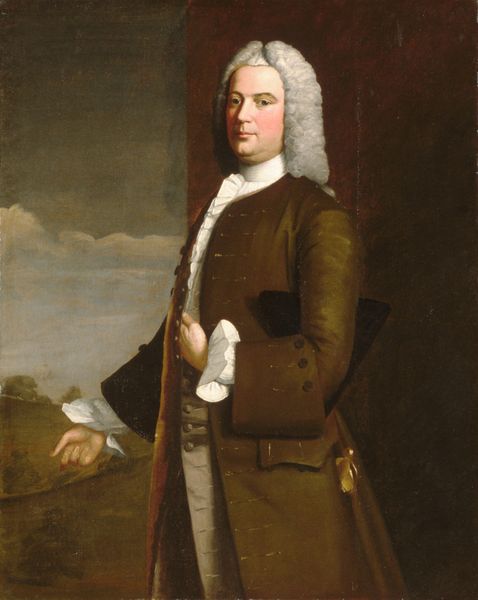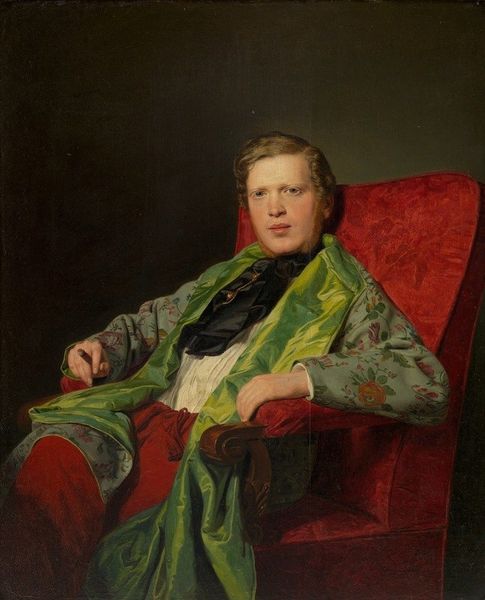
Dimensions: height 25.5 cm, width 23 cm, depth 4.5 cm
Copyright: Rijks Museum: Open Domain
Editor: Here we have Jacobus Buys' "Portrait of Cornelis Ploos van Amstel" from 1766, an oil painting currently at the Rijksmuseum. I find the gaze so compelling, almost unsettlingly direct. How do you interpret this work, especially in the context of its time? Curator: It’s a fascinating depiction, isn't it? I think we have to consider what it meant to be seen, to be represented in the Dutch Republic during the Enlightenment. The direct gaze certainly suggests a sense of self-assurance, reflecting perhaps the burgeoning power of the merchant class. He looks at us, the viewer, as a man secure in his place. How does that resonate with you, given what you know about social structures then? Editor: It's true; he seems self-assured. Yet, the setting also feels constrained. Is it possible that these formal portraits, while celebrating individual success, were also reinforcing social hierarchies? Curator: Absolutely. Portraits like these weren't simply records; they were performances of status and belonging. The composition, the clothing, even the man's expression, are carefully constructed to convey specific messages about wealth, education, and social standing. This raises an important question, what voices may have been silenced during the creation and reception of this art? Editor: That's a point well taken. So, looking beyond the surface, we need to consider what this image conceals about the power dynamics of the era, and about who wasn’t being portrayed, and whose stories weren't being told. Curator: Precisely! And what can that reveal to us about our own present, and the representation, and misrepresentation, that persist today? The painting can prompt us to look more critically at the narratives we see, and at those we don't.
Comments
rijksmuseum over 1 year ago
⋮
The Amsterdam timber merchant Ploos van Amstel, a founding member of the Felix Meritis Society, had an impressive collection of drawings, paintings, coins and medals and sculptures. He was also a designer, draughtsman and publisher, and invented a new print-making technique for making facsimile reproductions of drawings. The screen by the window ensures that a soft, even light falls on the copper plate on which he is working.
Join the conversation
Join millions of artists and users on Artera today and experience the ultimate creative platform.
